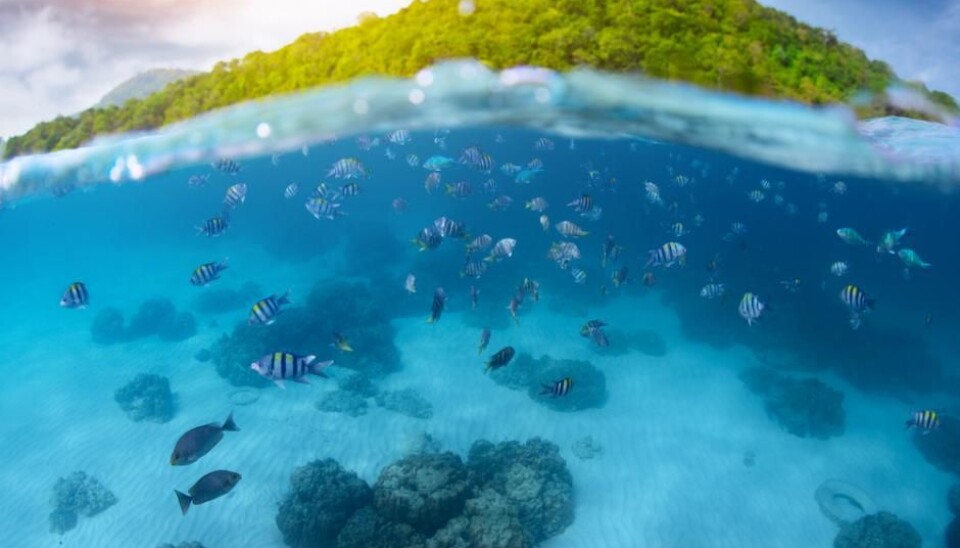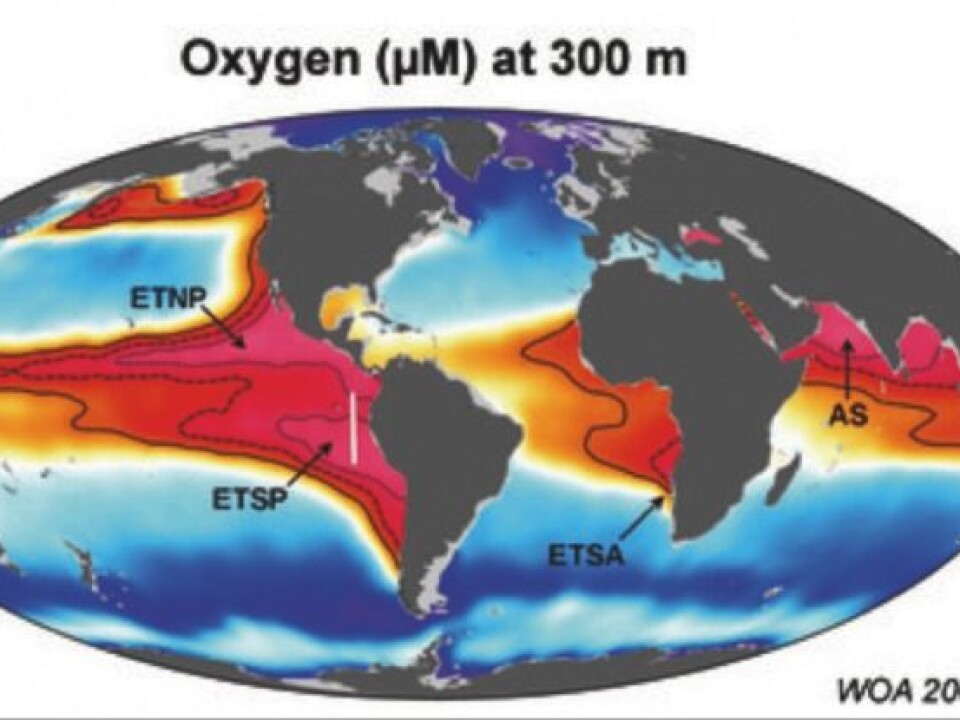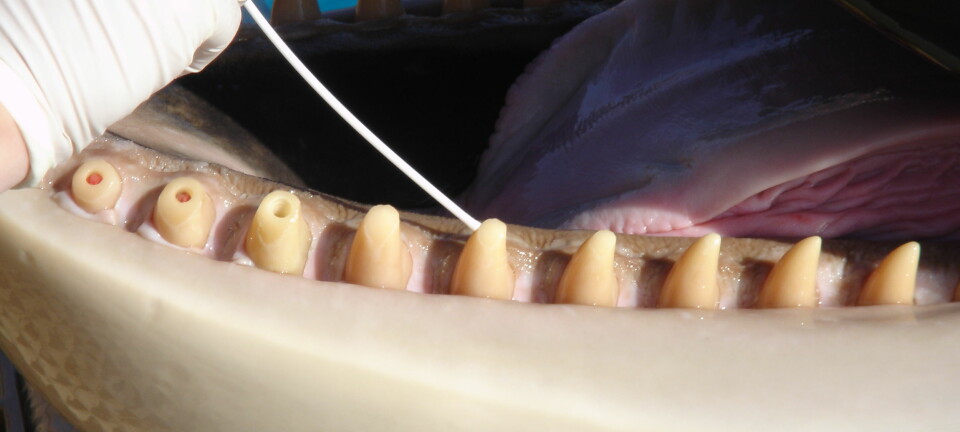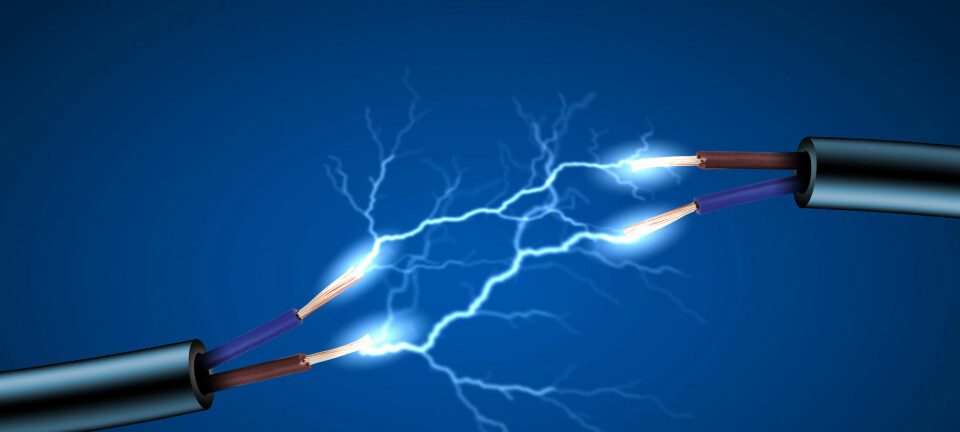
Marine bacteria are the climate’s wild card
How much carbon dioxide will the ocean be able to absorb in the future? A new study of marine bacteria brings us closer to the answer.
New research has measured oxygen in one of the oceans most oxygen-depleted places, so-called oxygen minimum zones.
The results offer new insights into the global nitrogen cycle and global climate.
“The study is a window into a previously little known and little studied part of the world,” says Jens Würgler Hansen, a marine biologist from the Department of Bioscience, Aarhus University, Denmark. Hansen was not involved in the new study.
To understand the new results, we need to dive half a kilometre down into the oxygen minimum zone of the Pacific Ocean, located off the coast of South America.

The bacteria in the oxygen minimum zone influence how much CO2 the ocean can absorb from the atmosphere.
“The bacteria determine whether these massive bodies of water release nitrogen to the atmosphere or store it in the water in a form that is available for the algae to use. In that way they decide how much CO2 the algae that live around the oxygen minimum zone can absorb," says lead-author Bo Thamdrup, professor of Biological Sciences at the University of Southern Denmark (SDU).
“We know that the oxygen minimum zone will expand with climate change. So it’s important to know what the underlying mechanism so that we can model what influence the bacteria in these zones will have on future climate. This is what we’ve done,” he says.
The results are published in the scientific journal PNAS.
Colleague: Impressive work
The new results have big implications for understanding the mechanisms behind the global nitrogen cycle, says Hansen.
“It’s impressive work, not least because it describes bacterial processes at the limit of what is technically possible to measure. The description of the processes at extremely low oxygen concentration can explain earlier ‘unexplained’ observations,” he says.
“The new knowledge can help improve our understanding of bacterial interactions and how oxygen regulates aerobic and anaerobic processes,” says Hansen.
Bacteria help the ocean to remove CO2 from the atmosphere
The amount of oxygen in the ocean controls the water’s bacterial composition and therefore the amount of nitrogen in the water and the amount of algae that can be sustained.
When there is lots of oxygen available, oxygen-consuming bacteria recycle the nitrogen where it is available as a nutrient for algae.
But if the oxygen is very low or disappears completely, specific bacteria become active and convert nitrogen into gas, releasing it into the atmosphere.
Since algae remove CO2 from the atmosphere and store it in the ocean a decline in algae would be bad news for climate.
“So it’s really important to know which oxygen levels are responsible for changing the balance between these two groups of bacteria. How little oxygen does it take before the ocean goes from being able to recycle nitrogen and absorb CO2, to a limited ability to absorb CO2 and releasing nitrogen into the atmosphere? This is what we’ve found out,” says Thamdrup.
Oxygen minimum zone is expanding
The oxygen minimum zone off the South and Central American coasts has existed for 10,000 years, but it has recently been observed to grow. This is probably due to climate change, and the expansion is expected to continue, says Thamdrup.
This could set up a so-called positive feedback loop, where the ocean releases more and more nitrogen to the atmosphere, takes up less and less CO2, and exacerbates global warming.
“We don’t know how big these effects are and we can’t model them without knowing how bacteria influence them. The bacteria are missing in climate models that predict the dynamics and future influence of the oxygen minimum zones,” says Thamdrup.
“A third of all nutrients in the ocean are removed in oxygen minimum zones, but we don’t know if that number will double or if the oxygen minimum zone doubles in size. So it’s important to determine this dependence,” he says.
Impacts on fishing and people
The bacterial composition of the oxygen minimum zone also impacts the fish living there. And when they are affected, we are affected.
“The oxygen depleted core of the oxygen minimum zone occurs between 50 and 400 metres deep in the ocean, off the coast of South America. The water above this zone is one of the richest in fish and if there are fewer algae for copepods and fish to eat, it can have a negative impact on the entire ecosystem,” says Thamdrup.
Thamdrup and his colleagues took water samples from 50 metres below the surface of the Pacific Ocean and measured the oxygen content and the different types of bacteria.
“We looked at these two types of bacteria to find out where to draw the line, as to whether one or the other has taken over. There is extremely little oxygen in the water, but there is a ‘tipping point’ where this happens. We wanted to find out what that tipping point is,” says Thamdrup.
Bacteria can survive at extremely low oxygen levels
The results show that the nitrogen-releasing bacteria take over when oxygen levels drop to 1/10,000 of the oxygen content at the sea surface.
“This is the limit between a nutrient-recyling system and a nutrient-consuming system. The levels are very low, but even so the nutrient-recyling bacteria prevail against the nutrient-consuming bacteria,” says Thamdrup.
This discovery indicates that even if the oxygen minimum zone grows in the future, it will not have a great impact on the oceans’ ability to absorb CO2 from the atmosphere.
So low oxygen levels are not enough to alter the oceans’ ability to remove CO2 from the atmosphere, says Thamdrup.
“We shouldn’t worry if the oxygen minimum zone grows or not. The only thing that matters is whether or not the oxygen disappears completely,” he says.
-------------
Read the Danish version of this article on Videnskab.dk
Translated by: Catherine Jex













